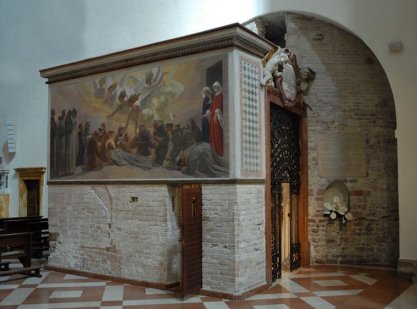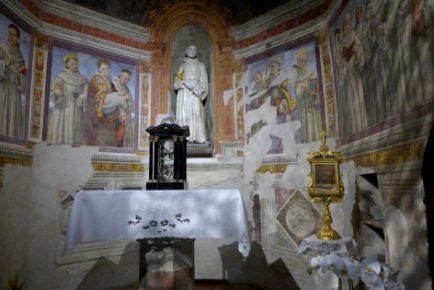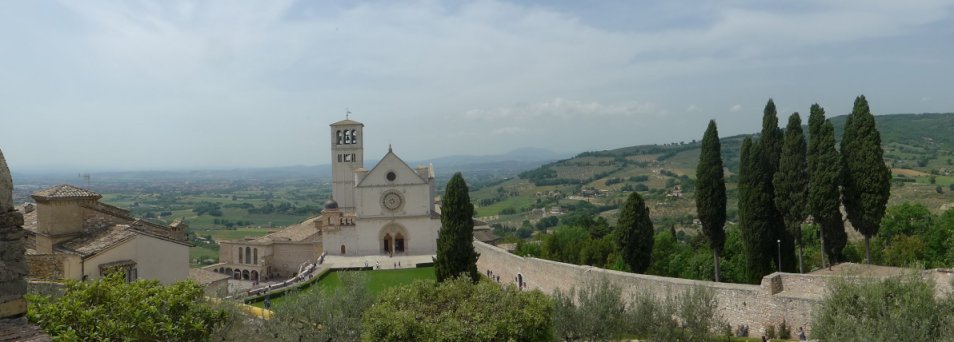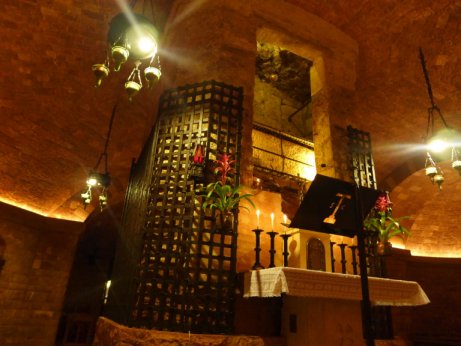Francis died on the third of October 1226, two years after the date of the stigmatization. He was aged 44.
The place of his death was in what is now the church of Santa Maria degli Angeli which we met earlier. At the time this was just a collection of wooden huts. The chapel of the Transito is on the site of the hut in which he died, then an attempt at an infirmary. Inside is a case containing the rope worn by Francis.



The site was to the west of Assisi, on a low hill outside the city wall, used up to that point for the execution of criminals and known as the Colle dell'Inferno. The parallels with the location and function of Golgotha in Jerusalem are striking, and were certainly not lost on the followers of Francis. Another interesting feature is the orientation of the church east to west, 'occidental orientation'.
This is largely due to the location: visitors will come from the town, so was is sensible to allow them to enter through the east door. The monastic buildings could then be sited to the west. There may be another reason: both St Peter's in Rome and the Holy Sepulchre in Jerusalem, important shrines, are orientated in this way.
The church was built with pilgrimage in mind. The Lower Church was laid out to allow pilgrims to circulate and pay homage to Francis, whose remains were moved here in 1230. The Upper Church was for the use of the Franciscans from the monastic buildings behind the church.

At the time the body of Francis was moved here
there were genuine concerns for the safety of the relics - saints relics
were a valuable commodity. Consequently, the body was hidden in loco
tutissimo et firmissio,
sealed in solid rock somewhere beneath the high altar.
The years passed and the
friars forgot where they had put them. They weren’t found until 1818,
following excavations into that solid rock beneath the basilica.
Strangely, amongst the items found with the relics were eleven silver
coins dating from the twelfth century from the mint of Otto IV -
identical coins were found with the relics of St Mark in Venice.
These coins were taken as evidence of the authenticity of the
remains. In 1978 the remains were examined by scholars who agreed with
this identification.
The sarcophagus
remained where it was found, and the crypt around it was begun in 1824.
It seems that the neo-classical style did not go down well. It was
redesigned in the nineteen-twenties and finally completed in 1932.
Back to page 1 Home page - explore the site